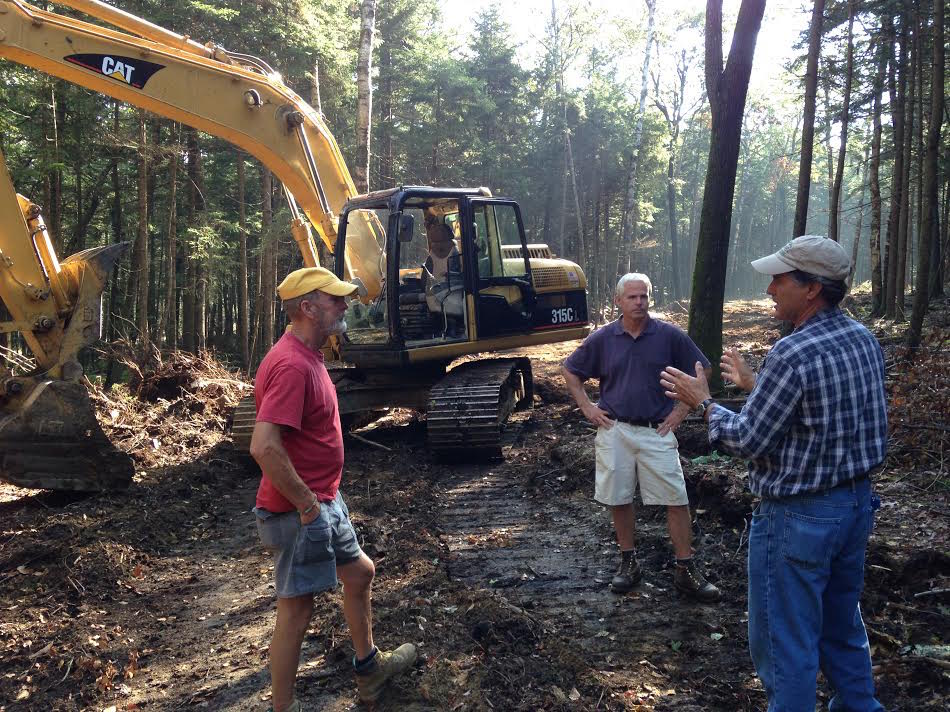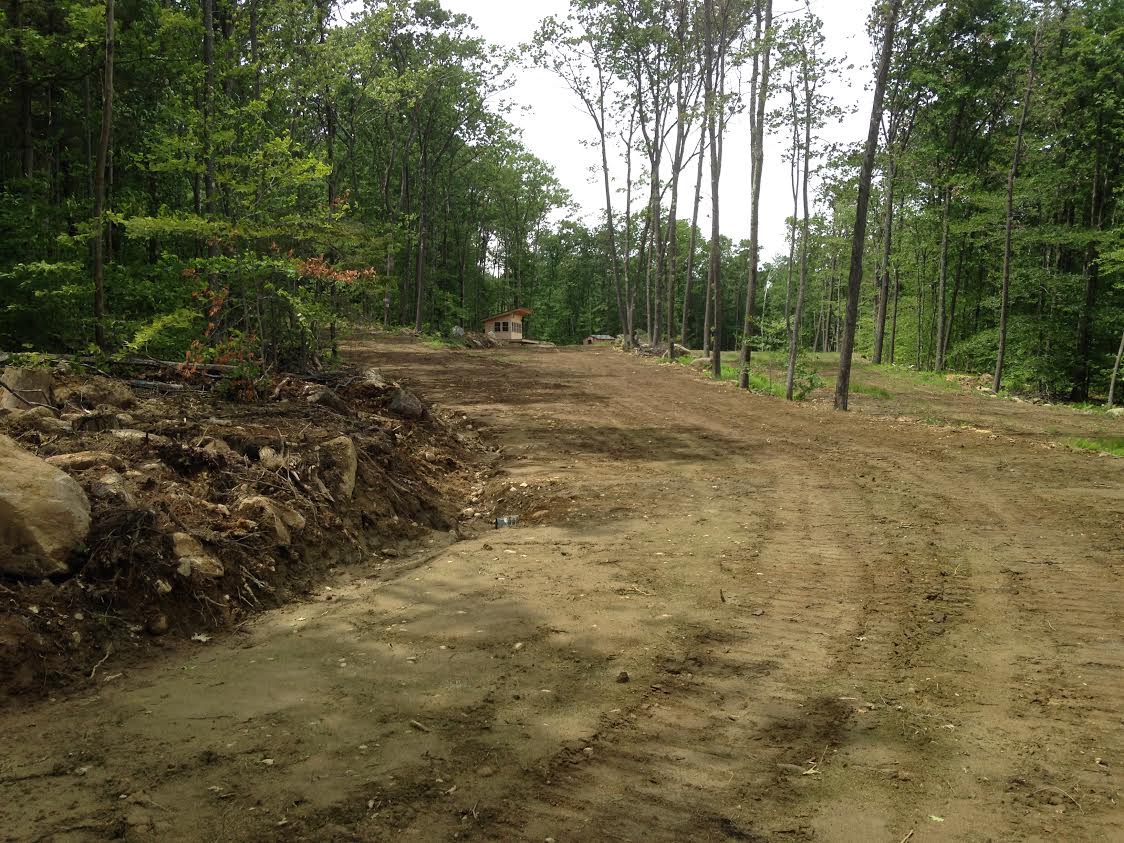
Note: In addition to the Dublin School, at least one other private school in New Hampshire has FIS-homologated trails. Proctor Academy, with 360 students in Andover, N.H., built FIS-approved trails (also designed by John Morton) two years ago. Proctor has two FIS-homologated loops of 2.5 k and snowmaking on 1.4 k.
***
Does a secondary school need an International Ski Federation (FIS)-sanctioned race course? Perhaps not, but that’s what skiers can expect when they go to New Hampshire’s Dublin School for the 2016/2017 ski season. The Dublin School, a private high school in southern New Hampshire, has a brand-new, FIS-homologated 5-kilometer loop, designed by John Morton, and it claims it’s the first high school in the world to receive the FIS homologation distinction.
Founded in 1935 by Paul and Nancy Lehmann, the Dublin School had unusual criteria. For location, according to the school’s website, “the site must be on the east side of hilly land at a considerable elevation,” and “There should be ample inexpensive, undeveloped, forested land and/or fields available for ultimate purchase and expansion.”
Michael Lehmann, the founders’ son, wrote in an email to FasterSkier that cross-country skiing was “an important sport the school” from the mid 1940s until the 1960s. Nathaniel “Buddy” Bates coached Lehmann when he was a senior at the Dublin School in the ’50s.
When Nathaniel’s son, Brad Bates, became Dublin’s new head of school and nordic ski coach in 2008, nordic had been an intramural sport for at least two decades. The only interscholastic ski competition was alpine.
After graduating from Dartmouth, Bates taught and coached rowing at a school in Delaware, where skiing was harder to come by. From there, he moved to Aspen, Colo., and became a high-school assistant principal, where, he “[reconnected] with skiing with a vengeance and got my own two kids into skiing,” he wrote. By coincidence, Noah Hoffman was a student at Aspen High when Bates worked there – although Bates didn’t coach there.
Upon his hiring as Dublin’s headmaster, Bates was instructed by Lehmann to hire a trail designer and build the best loop possible, Bates explained. So he reached out to his former Dartmouth coach, John Morton.
Tradition and the Future
Lehmann and his sister owned 82 acres of north-facing land adjacent to 27 acres owned by the Dublin School. With an upper elevation of 1,800 feet and significant terrain changes, “The slopes of the hill are steep enough for interesting and challenging Cross Country skiing. So, this was a perfect place to create the Nordic center,” Lehmann wrote in an email. They donated the land to the Dublin School.
“Both my sister and I consider outdoor sports to be very important for young people. What could be better than a sport which is in fresh air and sunshine, is fun, develops strength and stamina, and where there is the opportunity for competition?” Lehmann continued. “As this was a blank and very suitable piece of land, why not create the best trail system, one which could achieve FIS homologation?”
“What could be better than a sport which is in fresh air and sunshine, is fun, develops strength and stamina, and where there is the opportunity for competition?” — Michael Lehmann, on donating 82 acres to New Hampshire’s Dublin School for FIS-homologated ski trails
“We have 800 vertical feet on our campus,” Bates said in a phone interview.
The new 5 k loop connects with the school’s pre-existing trail system, which included 7 k of race trails (opened in January 2014) and 20 k of older trails. The new 5 k loop received a “C classification” from FIS, meaning it’s approved for classic mass starts and freestyle individual-start races.
“We may one day expand the stadium. It’s just the stadium area that’s the main issue,” Bates added.
Bates wanted a trail system “that would be first and foremost fun to ski and that would get junior skiers excited.” He also wanted a course that would be fair.
“As a ski racer, I was on congested trails. It wasn’t obvious then, but now it’s obvious,” he said.

He wanted the feel of a good race course while also making it practical for a race jury. One example: part of the reason the Dublin course isn’t homologated for a freestyle mass start is a bottleneck near the start.
“How the finish line works, turns out of the start, how downhills heading into quick abrupt uphills affect race fairness was all new to me,” Bates said. “The thought is that once we have the personnel and the infrastructure we can host major races here.”
Although Morton explained he tries to keep in touch with the skiers he coached during his 11 years at Dartmouth, he had lost touch with Bates and was glad to receive his email about developing the Dublin trails.
Regarding the trail design, Morton wrote, “Finding the required climbs was less of a concern than locating a potential start/finish area, which requires a level opening of at least 150 meters by about 50 meters. If you are working generally with a hillside, as we were in Dublin, it is ideal if the start/finish can be located somewhere near the middle of the available elevation gain. We were fortunate to find a modest natural shelf that provided just enough space for the start/finish, mid-way up the hill.”
While Bates mentioned a potential bottleneck that would preclude a freestyle mass start, Morton also looked at tree cutting. He explained that a homologated freestyle mass start course requires rolling terrain, including climbs that are 9 meters wide on the uphills and 6 meters wide in descents.
“[It’s] difficult for me to advocate cutting that kind of a swath through the trees of rural southern NH (for example), simply to comply with World Cup standards,” Morton wrote. “On the positive side, any skier who trains or competes on the Dublin School’s homologated race course, and goes on to compete internationally, will not be surprised by the competition venues he or she encounters… elsewhere in the world.”
Lehmann believes that homologation would enable students to train on courses similar to what they’d find at regional and national competitions. He wrote that Dublin School would bid for an Eastern Cup event once it had developed a sufficient volunteer base. Its student body is approximately 150 for grades 9 through 12, according to its website.

In addition to the new race loop, the Dublin School developed three additional kilometers of track that are not homologated. The total cost to build 8 k of trails, a yurt and a timing shed was under $250,000, Bates said.
In a continuing response to warm northeast winters, the Dublin School also installed snowmaking on a 1 k loop on the lower part of its campus. Intended for training and sprint races, Bates expects this loop to be fully solar-powered. He characterized it as a testing ground to determine whether it would be feasible to put snowmaking in on the FIS loop.
“People on the board made [snowmaking] a personal project,” Bates said.
“FIS homologation prequalifies Dublin to host national and international events where athletes hope to earn FIS points and qualify for the US National Team,” Bates stated on the school’s website. “For us, however, we are just happy to have such a fun and technical venue for our skiers to learn and enjoy the sport of skiing…”
According to Lehmann, the school created the Dublin XC Ski Club, “which attracts local skiers, many of whom [are] not otherwise connected to the School.”
The nordic center is open to the public when conditions are safe for skiing, except for when it is used for regional or school events.
Bates added, “Everyone is welcome to ski the trail system so long as they sign an online waiver. However, “The snowmaking loop will be reserved for school families and the local club we helped start, Dublin XC.”
“In Brad Bates, we could see a Head of School who would enthusiastically drive the re-introduction of Cross Country skiing – and he has done so!” Lehmann wrote.
“It is … heartwarming for me to see my former skiers passing along their love for the sport to another generation,” Morton said.
Peter Minde
Peter Minde is a FasterSkier contributor and personal trainer specializing in functional strength and corrective exercise. Whether skiing, trail running, or cycling, he’s always looking to see what’s at the top of the next hill. From the wilds of north N.J., he skis for Peru Nordic. On Twitter @PeteMinde or at www.oxygenfedsport.com.
